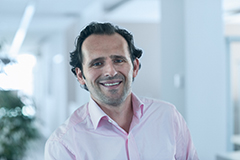A quick online search for "edge Data Centers" reveals some interesting results: a search in English delivers over 10,000 hits, while a search in German ("Edge-Rechenzentren") produces only 5 (as on January 8, 2016). How can this be, and what kind of potential new trend is about to engulf the Data Center market? Or is it simply old wine in new bottles which, in the guise of a buzzword, is being sold to us as the next big thing?
I am going to tackle the subject in this blog, and attempt to explain to what extent this phenomenon is relevant to the German market. My American colleagues were able to confirm that the number of edge Data Centers in the U.S. has increased dramatically in the last 1-2 years, and that they are a hot topic in the American specialist media. As I read the numerous English articles available, my first impression is that it could be purely an American phenomenon. But why is that the case?
U.S. situation
In view of its surface area of nearly 10 million square kilometers and population of approx. 320 million, the American Data Center landscape must necessarily be very different from its German counterpart. Looking at the country as a whole, population density in the U.S. is many times smaller than Germany's, and varies considerably from one region to another. Accordingly, many of the U.S.'s large Data Centers have been established in the great urban centers on the West and East coasts. The country as a whole is supplied with web content from these regions. This functioned reliably in the past, because the volumes of data that had to be transferred were not especially large.
However, due to the enormous growth in cloud and online services, in which software, films and games encompassing huge amounts of data are streamed onto private screens, internet systems are increasingly approaching their limits. For applications with constantly high volumes of data, it is not only the available bandwidth that is important for transmission quality - the distance between a person watching a film and the Data Center from which the film is being streamed live is also a vital factor. Large volumes of data from a great many users increases latency, and buffering of live content becomes ever more frequent. In addition, transporting data from different networks right across the country entails high costs. User numbers for the leading American companies offering live content are extremely high. Therefore, it is not improbable that on certain days, many millions of people are sitting in front of large and small screens and streaming content in HD quality. Finally, what also matters is that the films, TV series and games beloved by many are shown to consumers at prime time in top quality and without interference. For niche services and at quiet times, the necessary quality is achieved more easily due to the smaller user numbers.
The edge is growing
Suppliers of edge Data Centers recognized this problem and began a massive operation to build Data Centers in regions that had previously received content from the large conurbations in the traditional way. In edge Data Centers, content can be cached and retrieved locally. And not every piece of data has to be available in each Data Center at the same time. Edge Data Center operators have established a network of Data Centers of varying size in the U.S. The larger ones are hubs, which are interconnected. Further, smaller Data Centers are connected to these networks, and they cache content and make it available locally. It's obvious that this ensures a faster and better supply. Just like a freeway: it only makes sense if there are many exits and no diversions. Pushing the source of data closer to users can be regarded as expanding the edge of the internet.
DE-CIX in Frankfurt breaks a record - 5 Terabits per second
DE-CIX in Frankfurt is one of the most important German internet exchanges for the international forwarding and exchange of data traffic. At the end of 2015, DE-CIX operators announced a new peering record of 5 terabits per second. This record-breaking success was recorded on December 8, 2015. It is remarkable that this was the second record of its kind in one year. The 4 terabits per second barrier was smashed in April 2015. In the operators' opinion, the main reason for this increase is the growth in online video content and growing numbers of mobile end devices. This could be the first hint that we are heading towards a U.S. style situation.
So now we must ask the question: when are the first edge Data Centers coming to Germany, or are they in fact already here in another form? As in the U.S., Germany also has numerous large Data Centers in metropolises, which supply the whole country. The distances involved here are much smaller, however. In Germany, with a very well developed network a Data Center can reach a great many users, and guarantee the required quality of connections and streaming. In fact, cloud providers believe that theoretically, Data Centers do not even have to be situated in Germany, or indeed Europe. This notion is unpopular in Germany, however, and not feasible in the long term. Therefore, last year many cloud providers were on an intensive search for colocation partners in Germany who cache web content in their Data Centers, or they built Data Centers of their own.
I do not see the need for edge Data Centers in Germany in the near future, because the existing Data Center infrastructure should be sufficient. In Germany, the streaming of very large volumes of data is still in its infancy. This will change in future in any event. As user numbers grow, smaller local Data Centers may eventually be required, to make sure that users can enjoy a film without any interruptions, for example. Looking at Europe as a whole, the situation could change more quickly. The first American providers of edge Data Centers are planning Data Center sites in Europe, and it will be fascinating to see in which countries and cities these will be.


